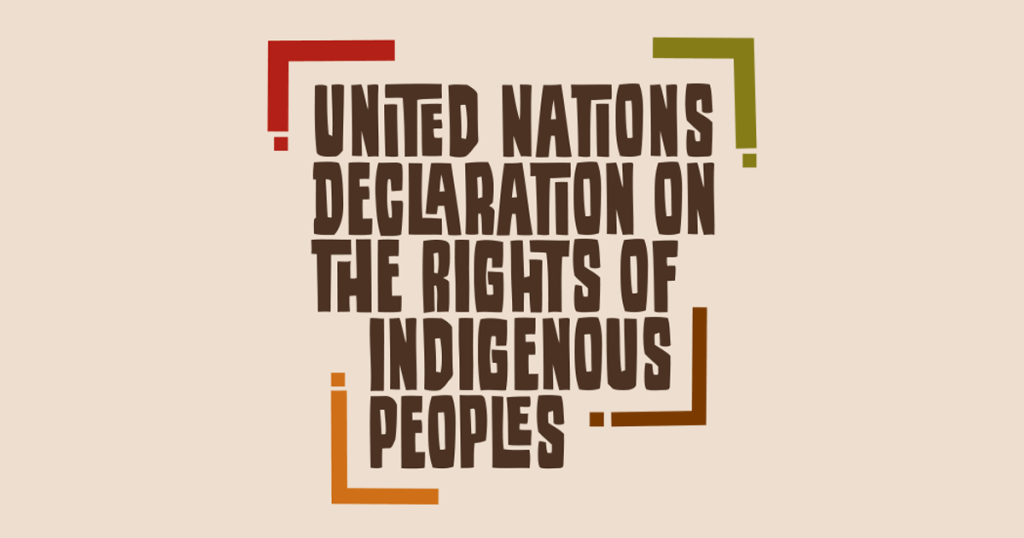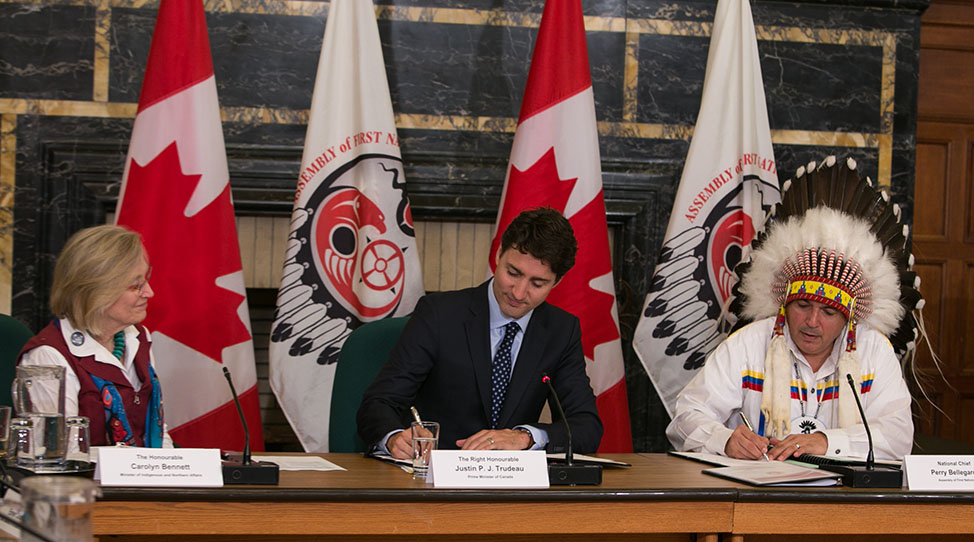
5
Shift Power
Shifting power and moving resources
Laws, governmental funding, and espacially land-use plans still lean away from Indigenous people and communities, but shifting power and moving resources means rewriting these rules, supporting Indigenous people influencing what happens on their lands. Canada’s Truth and Reconciliation Commission has 94 calls to actions1, but there are only a few of them are ectually accomplished2. Though promoting Indigenous rights from the perspective of law is extremely hard, it is the final – and the most crucial step for a lasting and meaningful reconciliation.
Align the UNDRIP
The United Nations Declaration on the Rights of Indigenous Peoples(UNDRIP) commits that every Federal law needs to be updated so it respects Indigenous rights. Central themes of UNDRIP are3:
- Right to self-determination
- Right to be recognized as distinct people
- Right to free, prior, and informed consent
- Right to not being dicriminated
Annual progress report of UNDRIP
94 calls to actions
In 2015, the Truth and Reconciliation Commission of Canada released 94 Calls to Action to redress the legacy of residential schools and advance reconciliation between Indigenous and non-Indigenous peoples.
Progress has been slow, therefore tracking these calls to action is ensuring that the government and institutions remain accountable in measurable outcomes instead of just in words.
Progress since 2023
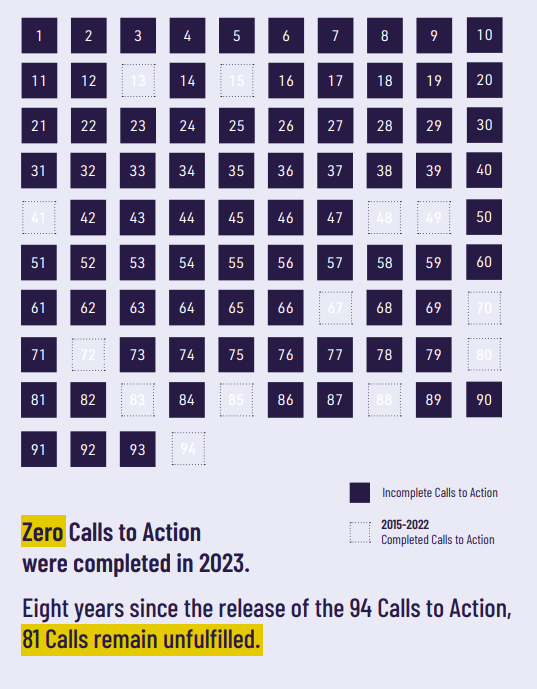
According to Yellowhead Institue, there were no calls to action completed in 2023, and there were only 13 calls to action completed since 20154.
Land
Land is not just real estate, it is also sovereignty, memory, and the base of every other right. In UNDRIP, Indigenous people are affirmed to have the right to own, use, and control the territories that they have traditionally occupied. For the last decade Canada has begun translating these words to action and especially since 2024:
Haida Title Lands Agreement
Haida Title Lands Agreement has formally recognizes Haida title across Haida Gwaii, and launched a five years transition to Haida governance of the archipelago5.
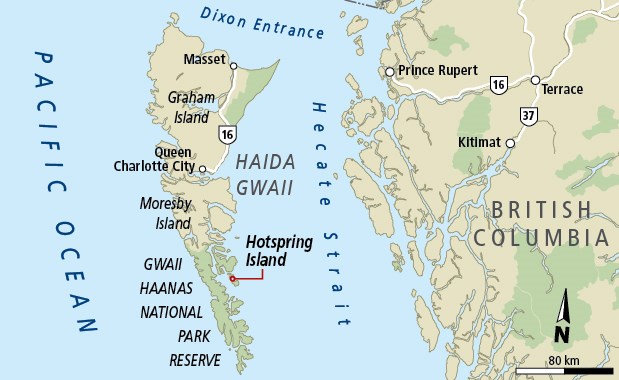
Rouge National Urban Park Co-Management
Parks Canada has designed a shared-governmance method led by the Mississaugas of the Credit, Huron-Wendat, and Williams Treaties Nations6 7.
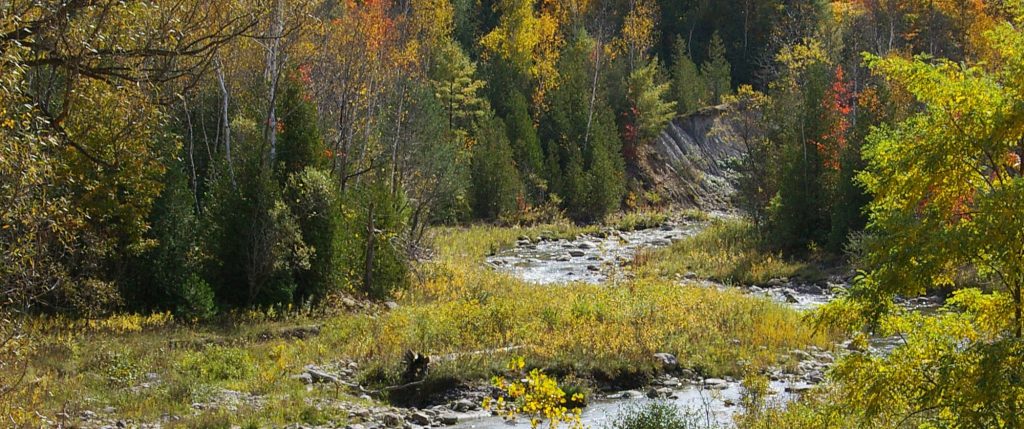
Deficiencies still exist
According to the Assembly of First Nation, there is an appalling $349.2 billion gap in First Nation’s infrastructure. In 2021, there were 37% of First Nation people’s homes requiring major repairs, and 35% lived in overcrowded conditions, the lack of infrastructure has led to limited education and poor health conditions of Indigenous people8.
- “Delivering on Truth and Reconciliation Commission Calls to Action.” Government of Canada, 13 Nov. 2024, www.rcaanc-cirnac.gc.ca/eng/1524494530110/1557511412801. ↩︎
- “Reports.” NCTR, 22 May 2025, nctr.ca/publications-and-reports/reports/.
↩︎ - “The United Nations Declaration on the Rights of Indigenous Peoples.” CMHR, humanrights.ca/story/the-united-nations-declaration-on-the-rights-of-indigenous-peoples. Accessed 18 June 2025. ↩︎
- Jewell, Eva, and Ian Mosbey. “Calls to Action Accountability: A 2023 Status Update On …” Yellow Head Institute, yellowheadinstitute.org/wp-content/uploads/2023/12/YI-TRC-C2A-2023-Special-Report-compressed.pdf. Accessed 18 June 2025. ↩︎
- “Provincial Agreement on Haida Aboriginal Title.” Province of British Columbia, 19 Feb. 2025, www2.gov.bc.ca/gov/content/environment/natural-resource-stewardship/consulting-with-first-nations/first-nations-negotiations/first-nations-a-z-listing/haida-nation-council-of/haida-title-agreement. ↩︎
- “Government of Canada Announces Intent to Significantly Expand Rouge National Urban Park.” Government of Canada, 27 Jan. 2025, www.canada.ca/en/parks-canada/news/2025/01/government-of-canada-announces-intent-to-significantly-expand-rouge-national-urban-park.html. ↩︎
- “Rouge National Urban Park.” Water Front Trail, waterfronttrail.org/Publications/2024_10_01_PFLVisionRptcompressed.pdf. Accessed 18 June 2025. ↩︎
- “Socio-Economic Benefits of Closing the First Nations Infrastructure Gap Include $635 Billion Economic Impact: AFN and Conference Board of Canada Report.” Assembly of First Nations, 28 May 2025, afn.ca/all-news/press-releases/socio-economic-benefits-of-closing-the-first-nations-infrastructure-gap-include-635-billion-economic-impact-afn-and-conference-board-of-canada-report/.
↩︎
